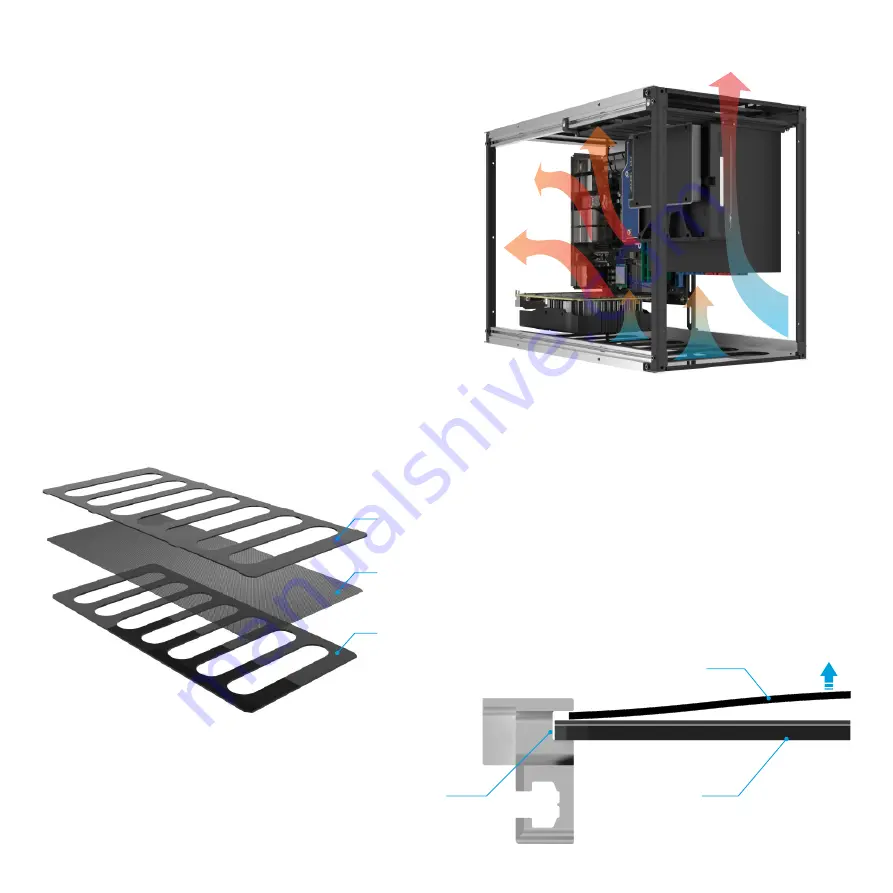
The standard approach will be to draw cool air from the lower and right
side of the case and vent it towards the left, rear and upper sides of the
case. If using a top-down cooler it will likely be drawing air in from the left
side, so adding a fan above the motherboard or a rear fan could aid with
removing the warm air inside the case.
It is also worth evaluating if a negative or positive case pressure setup is
going to work best and considering the various associated pros and cons.
There is no single solution that is going to apply to every build, but there
are general principles to consider when aiming for optimal cooling. Of
course, a lot is going to depend on the CPU, GPU, cooling hardware and
the application, so all these must also be factored in.
Cooling Strategy
The orientation of the PSU should also be considered, it can either
operate in an isolated way, drawing air from the right side or be used to
draw air from inside the case, potentially reducing heat build-up, especially
from the drive area.
Upper / Lower Dust Nets
The upper and lower sides feature an integrated net which is sandwiched
between outer and inner acrylic sheets. The net can be removed for
cleaning by first removing the outer acrylic sheet which has a slightly
different cutout and is thinner, making it easier to bend. Flexing the outer
sheet so that it bends in the middle will allow it to clear the inner track of
the frame and be removed from the case. Do not apply to much force
when bending, even though the material is flexible, it can crack if too much
force is applied. Simply reverse the procedure to replace the acrylic sheet.
14
Outer
Net
Inner
Frame Inner Track
Inner (Thicker)
Outer (Thinner)
















